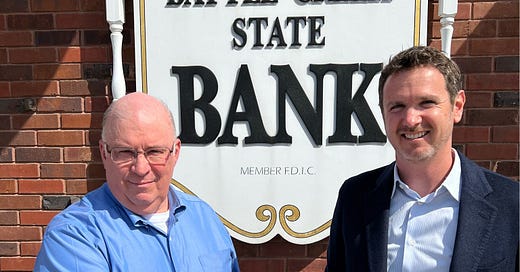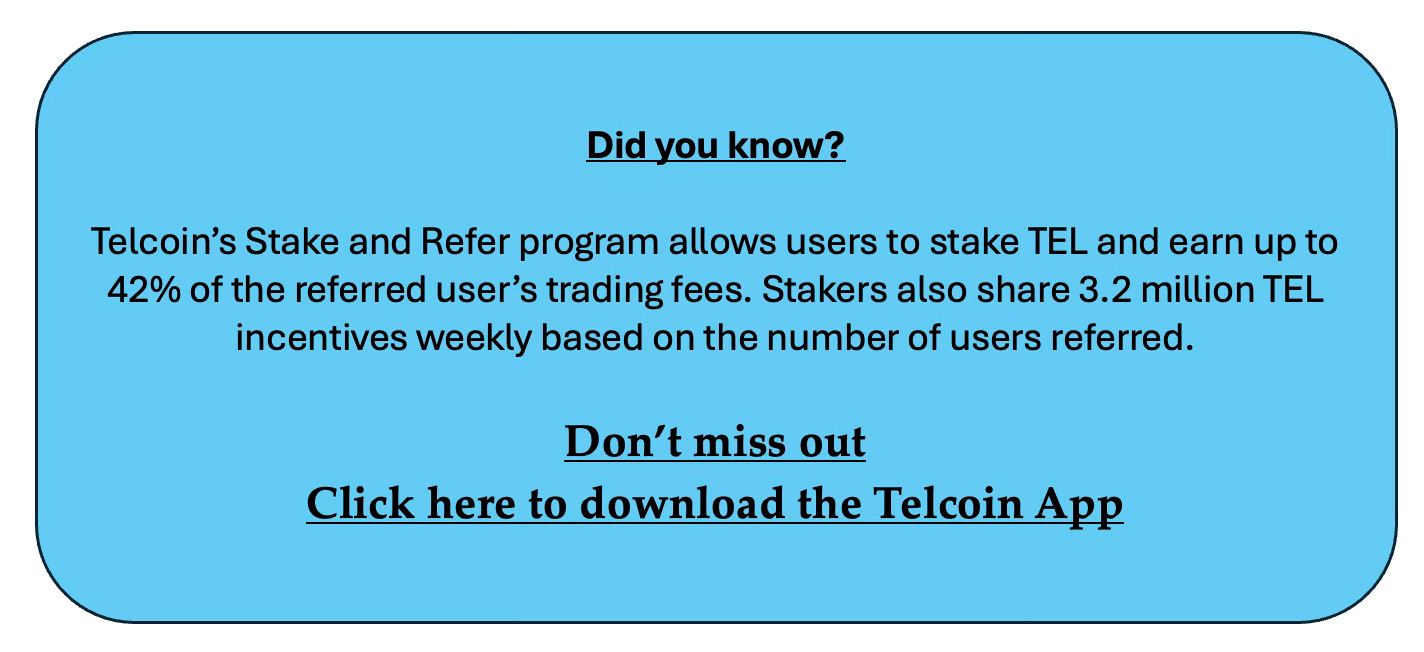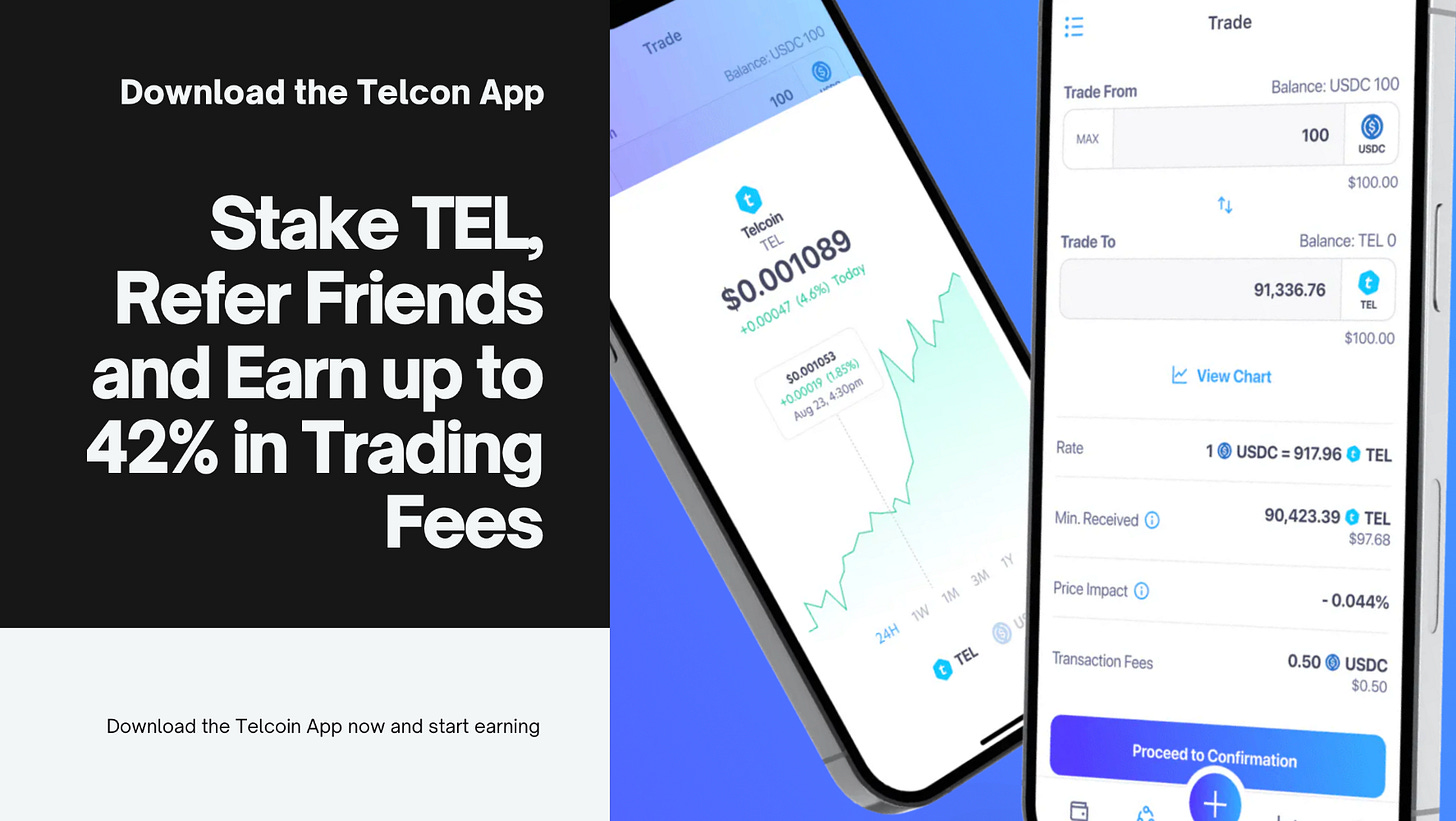One of Telcoin’s most important statements this year is the following:
“Telcoin commends the Treasury Department’s commitment to community banks and looks forward to serving them through our digital asset bank in Nebraska.”
Let me explain.
It begins with an announcement made on May 3, 2022, by Telcoin CEO Paul Neuner when he posted on X, saying, “Excited to invest in a #Nebraska community bank and join their board (pending regulatory approval) — a very important step in our journey. True story: the bank printer was out of paper and the local shop only had blue! Is that not destiny?”
While many saw Mr. Neuner's social media post, few fully grasped its deeper significance. On February 6, 2025, Richie Ramone clarified the development, posting on X that “In December, Telcoin acquired a 24.9 percent stake in Battle Creek State Bank to eventually bring it under the same bank holding company as Telcoin’s digital asset institution.” This strategic move was further confirmed by a report published on Lexology earlier this year. 24.9%. That is big. But why does it matter?
Understanding Battle Creek State Bank's stature underscores the importance of this investment. Established as a state-chartered member bank of the Federal Reserve System on April 19, 2000, Battle Creek operates under the supervision of the Federal Reserve Bank of Kansas City. It is also regulated by the Nebraska Department of Banking and Finance. Moreover, Battle Creek’s deposits are insured by the Federal Deposit Insurance Corporation (FDIC), offering customers confidence and security. As a member of the Federal Home Loan Bank (FHLB) system, the bank also benefits from enhanced liquidity for housing and community development lending.
The Vital Role of Community Banks in America’s Financial System
Telcoin’s strategic focus on community banks was reaffirmed on April 22, 2025, when the company expressed its appreciation for the U.S. Treasury Department’s commitment to supporting community banks, noting that it “looks forward to serving them through our digital asset bank in Nebraska.”
This statement came shortly after Treasury Secretary Scott Bessent addressed the American Bankers Association on April 9, 2025, emphasizing that “Community bankers can make America great again.” Secretary Bessent voiced concern that excessive compliance burdens have hampered the vital work of community banks, signaling a broader policy shift aimed at empowering these institutions to drive economic rejuvenation.
But why is there an emphasis on community banks, and why does Telcoin's investment in Battle Creek matter so profoundly?
Community banks are the backbone of America’s local economies. According to the Independent Community Bankers of America(ICBA), these institutions reinvest local dollars into their communities, creating jobs and fostering financial stability through relationship-based banking — one loan, one customer at a time. Their localized focus enables them to nurture small businesses, assist families with major purchases, and build community wealth.
Furthermore, community banks are agile adopters of emerging technologies. They are often among the first to embrace innovative payment systems and advocate for stringent cybersecurity standards, protecting small businesses and individual customers from digital threats.
Today, community banks represent nearly 45,000 locations across the United States, employing approximately 700,000 Americans. In one-third of U.S. counties, they are the sole physical banking presence. They hold $6 trillion in assets, $4.9 trillion in deposits, and $4 trillion in loans — a testament to their centrality in sustaining America's Main Streets and fueling local dreams.
A New Frontier: Community Banks and Stablecoins
The regulatory environment for community banks took a historic turn in April 2025. U.S. banks can now engage in cryptocurrency and stablecoin activities without prior regulatory approval — a seismic shift in federal policy.
On April 24, 2025, the Federal Reserve, the FDIC, and the Office of the Comptroller of the Currency (OCC) rescinded earlier guidance requiring banks to obtain regulatory consent before engaging in crypto-asset and stablecoin ventures. This policy shift, championed by the Trump administration, reflects a broader move toward fostering innovation in the financial sector and creating a more crypto-friendly regulatory climate.
The Federal Reserve officially withdrew supervisory letters from 2022 and 2023, eliminating the mandate for prior notification for crypto-related activities. Banks are now expected to manage these activities through their routine supervisory frameworks. Similarly, the FDIC confirmed that banks under its supervision may participate in crypto activities provided they effectively manage the associated risks.
How will traditional banks use stablecoins?
On April 10, 2025, Telcoin said, "Nebraska will be home to #Telcoin's digital asset banking operations, but our bank-issued stablecoins are built for global use." This is because a key value proposition of adopting Telcoin’s stablecoins is to streamline payment systems, addressing longstanding inefficiencies in domestic and cross-border financial transactions. For example, traditional payment infrastructures, such as SWIFT, often involve multiple intermediaries, leading to settlement delays extending over several days, particularly for international transfers. By contrast, blockchain-based stablecoin transactions are recorded on blockchain networks that operate continuously, enabling near-instantaneous clearing and settlement. This technological shift not only accelerates transaction speed but also enhances transparency, reduces error rates, and minimizes the risk of fraud.
The adoption of stablecoins will also markedly lower operational costs. Legacy payment systems require extensive reconciliation processes, multiple verifications, and costly intermediary fees. With stablecoins, banks can bypass many of these friction points, achieving significant cost savings and operational efficiencies, which they can pass on to consumers or reinvest in innovation.
Beyond faster payments, stablecoins open the door to new financial services, particularly through tokenized deposits. Tokenized deposits represent customer funds in a digital form on a blockchain, allowing banks to offer programmable money. These funds can automatically execute contractual terms, such as loan repayments or conditional disbursements. This enhances liquidity management, as tokenized assets can move seamlessly across platforms, and fosters the creation of new, highly customizable financial products aligned with the emerging digital economy.
Bottom line
This development represents a major opportunity for Battle Creek State Bank—and, by extension, Telcoin. As a Federal Reserve member bank, Battle Creek can now engage in cryptocurrency and stablecoin operations without prior regulatory hurdles.
This presents a dual advantage for Telcoin. First, Telcoin has been authorized to operate as a Digital Asset Repository institution in Nebraska, allowing it to issue stablecoins like the eUSD. Second, Battle Creek's newly expanded capabilities mean it can facilitate stablecoin and cryptocurrency activities, including those linked to Telcoin's digital cash initiatives.
The implications are far-reaching. Because Battle Creek is a member of the Federal Reserve System, Telcoin's digital asset products can now indirectly access the broader community banking sector. This sector manages $6 trillion in assets.
If just 1% of community bank-held assets were converted into stablecoins, particularly Telcoin’s eUSD, it would represent an enormous infusion into the digital asset economy and significantly advance Telcoin’s mission of democratizing financial services across the United States.
The Telcoin Network could also facilitate stablecoin transactions for banks by providing a secure, scalable, and regulatory-compliant blockchain infrastructure specifically designed for financial institutions. Its decentralized framework could allow community banks to issue, transfer, and redeem stablecoins efficiently while maintaining high levels of transparency and security. By leveraging Telcoin’s interoperable network, banks can seamlessly integrate stablecoin operations into their existing systems, enabling instant domestic and cross-border payments. Additionally, Telcoin’s strategic partnerships with community banks and its Digital Asset Repository license position it uniquely to bridge traditional banking with digital finance, promoting broader stablecoin adoption across the financial sector.
Overall, Telcoin's investment in Battle Creek State Bank is not merely a business transaction but a strategic leap toward integrating traditional community banking with cutting-edge digital finance. It aligns with national efforts to revitalize community banks and reflects a profound shift in the American financial landscape—where innovation, inclusivity, and local empowerment drive the future.
Disclaimer
The information and content (collectively 'information') provided herein are general information. The authors do not guarantee the suitability or potential value of any information or particular investment source. Any information herein is not intended, nor does it constitute financial, tax, legal, investment, or other advice. The authors have no affiliation with Telcoin or other persons or companies referred to in this article. The information in this article is based on the sources used.








